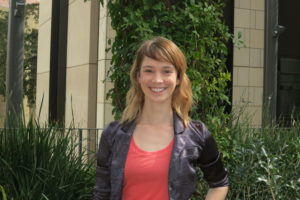Youth and Education Law Project: A Day in the Life
Please join me in welcoming Rylee Sommers-Flanagan (JD ’16) as a guest MLC blogger. As a student attorney in the Youth and Education Law Project (“YELP”) last quarter, Rylee details one particular day in her life in the clinical program — and happens to cover a case we highlighted in a recent post.
All names have been changed to protect client identities and confidentiality.

It was early in the quarter and my clinic partner, Holly Mariella (JD ’16) , and I were reviewing documents for our first case. Our clients were a fourteen-year-old boy, A., and M., his mother. A. was eligible for special education because he had ADHD, and he had recently been recommended for expulsion because he had a brief physical altercation with another student during his lunch period. Before doing anything else, we needed to go through the documents recently produced by his school and see what was happening with A.
We didn’t get far before I looked up and said, “Holly, read this. I think we need to get Carly [Munson] (Clinical Supervising Attorney).” Only a few pages into a 400-page document production, there was an email from a school district administrator saying to school staff that she wished she could just place our client in a non-public school.
This is significant because our client was desperately in need of more behavioral interventions than he’d been receiving. It was the quintessential smoking gun: The District admitted in writing that our client needed and deserved what we were about to ask for.
We spent many more hours reviewing the documents in A.’s case, but we knew we would need to reach out to our opposing counsel soon because A. had an expulsion hearing scheduled and we were seeing legal violations throughout the documentation. It was exciting, to say the least.
Meanwhile, for my other case, I was working with fellow clinic student Emma Kleiner (JD ’16) to schedule a meeting with our clients. We called and arranged a meeting for later in the week.
After that, I needed to figure out what a manifestation determination was – it’s a proceeding to determine whether a special education student’s behavior is a manifestation of his/her disability. We also needed to understand the rules around suspending special education students, which are specific and detailed. Finally, we needed to prepare for a phone call with our opposing counsel to schedule an individualized education plan (“IEP”) meeting before the expulsion hearing and within the statutory timeline.
To prepare for this, we mooted the conversation with our supervisors, YELP Clinical Director Bill [Koski] and Carly. This was terrifying because when Bill moots phone calls he turns his back to you and then Carly watches while you and your partner fumble around, trying to handle being two people on the phone and potentially an adversarial conversation. Of course, it’s also always a much more challenging conversation in moot because Bill and Carly both play the extreme version of any scenario. In any case, we mooted the call four times.
Later that afternoon, when we actually called our opposing counsel, there was no answer. When she called back, the conversation lasted less than a minute, but maybe because we were prepared. She asked what our client was hoping to accomplish at the IEP meeting and we calmly told her that we really couldn’t discuss it then, but we would love to hear her client’s ideas. She was quick to respond in kind.
———————–
Interested in learning more about the Youth and Education Law Project? Check out the YELP website for details.
